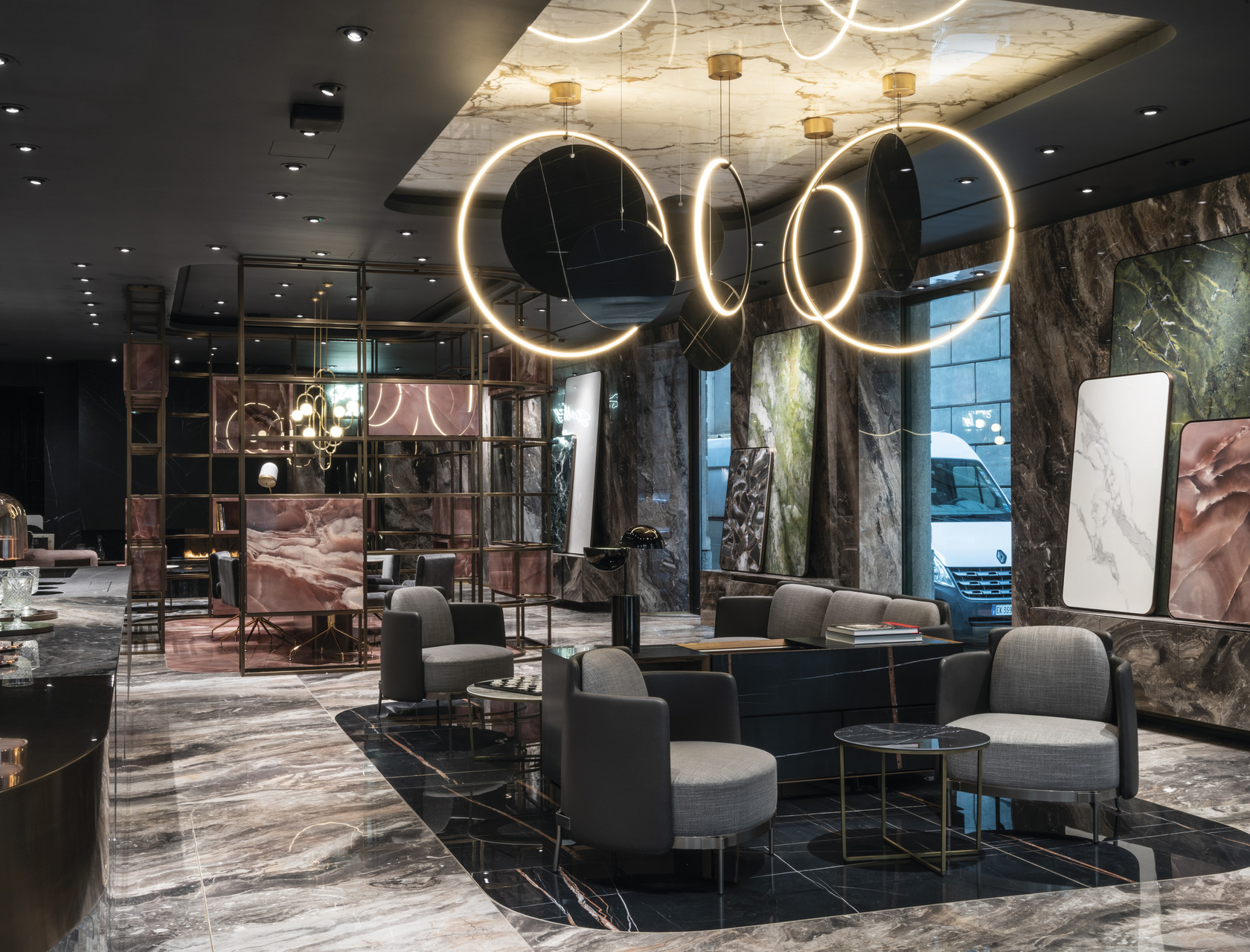The Brce-Khler compensator enables precise measurements of exceedingly small retardation values found in weakly birefringent organic specimens and low-strain glasses. Other polymers may not be birefringent (evidenced by the polycarbonate specimen illustrated in Figure 10(b)), and do not display substantial secondary or tertiary structure. There are also several disadvantages and limitations of the Hoffman Modulation Contrast system. The analyzer is another HN-type neutral linear Polaroid polarizing filter positioned with the direction of light vibration oriented at a 90-degree angle with respect to the polarizer beneath the condenser. However, electron microscopes do have a few disadvantages which would prevent them from being used outside of the clinical or research lab environment. Almost any external light source can directed at the mirror, which is angled towards the polarizer positioned beneath the condenser aperture. In order to match the objective numerical aperture, the condenser aperture diaphragm must be adjusted while observing the objective rear focal plane. The analysis is quick, requires little preparation time, and can be performed on-site if a suitably equipped microscope is available. A common center for both the black cross and the isochromes is termed the melatope, which denotes the origin of the light rays traveling along the optical axis of the crystal. When the stage is properly centered, a specific specimen detail placed in the center of a cross hair reticle should not be displaced more than 0.01 millimeter from the microscope optical axis after a full 360-degree rotation of the stage. The result is the zeroth band being located at the center of the wedge where the path differences in the negative and positive wedges exactly compensate each other, to produce a full wavelength range on either side. Best results in polarized light microscopy require that objectives be used in combination with eyepieces that are appropriate to the optical correction and type of objective. The extraordinary ray traverses the prism and emerges as a beam of linearly polarized light that is passed directly through the condenser and to the specimen (positioned on the microscope stage). These should be strain-free and free from any knife marks. Polarized light is a contrast-enhancing technique that improves the quality of the image obtained with birefringent materials when compared to other techniques such as darkfield and brightfield illumination, differential interference contrast, phase contrast, Hoffman modulation contrast, and fluorescence. The circular stage illustrated in Figure 6 features a goniometer divided into 1-degree increments, and has two verniers (not shown) placed 90 degrees apart, with click (detent or pawl) stops positioned at 45-degree steps. As objective magnification increases (leading to a much smaller field of view), the discrepancy between the field of view center and the axis of rotation becomes greater. They demonstrate a range of refractive indices depending both on the propagation direction of light through the substance and on the vibrational plane coordinates. Early polarized light microscopes utilized fixed stages, with the polarizer and analyzer mechanically linked to rotate in synchrony around the optical axis. Condensers for Polarized Light Microscopy. If markings are not provided on either the analyzer or polarizer, the microscopist should remember that simply crossing the polarizers in order to obtain minimum intensity in not sufficient. For microscopes equipped with a rotating analyzer, fixing the polarizer into position, either through a graduated goniometer or click-stop, allows the operator to rotate the analyzer until minimum intensity is obtained. Polarized light microscopy is used extensively in optical mineralogy. This can be clearly seen in crossed polarizers but not under plane-polarized light. Also, because the cone of illumination and condenser numerical aperture are reduced without the top lens, resolution of the microscope will be compromised, resulting in a loss of fine specimen detail. When interference patterns are to be studied, the swing lens can quickly be brought into the optical path and a high numerical aperture objective selected for use in conoscopic observation. Images must be viewed with caution because different observers can "see" a "hill" in the image as a "valley" or vice versa as the pseudo three-dimensional image is observed through the eyepiece. A beam of unpolarized white light enters the crystal from the left and is split into two components that are polarized in mutually perpendicular directions. On the left (Figure 3(a)) is a digital image revealing surface features of a microprocessor integrated circuit. When the fiber is aligned Northeast-Southwest (Figure 7(c)), the plate is additive to produce a higher order blue tint to the fiber with no yellow hues. Figure 2 illustrates conoscopic images of uniaxial crystals observed at the objective rear focal plane. Many polarized light microscopes are equipped with an eyepiece diopter adjustment, which should be made to each of the eyepieces individually. These can be seen in crossed polarized illumination as white regions, termed spherulites, with the distinct black extinction crosses. More importantly, anisotropic materials act as beamsplitters and divide light rays into two orthogonal components (as illustrated in Figure 1). The objectives (4x, 10, and 40x) are housed in mounts equipped with an individual centering device, and the circular stage has a diameter of 140 millimeters with a clamping screw and an attachable mechanical stage. It is commonly used to observe minerals, crystals, and other transparent or semi-transparent materials, as well as to analyze the structure and properties of these materials. Sorry, this page is not available in your country, Polarized Light Microscopy - Microscope Configuration, Elliptical Polarization with Rotating Analyzer. Polarized light is a contrast-enhancing technique that improves the quality of the image obtained with birefringent materials when compared to other techniques such as darkfield and brightfield illumination, differential interference contrast, phase contrast, Hoffman modulation contrast, and fluorescence. This situation may be rectified by moving the polarizer to its zero degree click stop (or rotation angle), followed by re-setting the analyzer to this reference point. In summary, identification of the three asbestos fiber types depends on shape, refractive indices, pleochroism, birefringence, and fast and slow vibration directions. About Us, Terms Of Use | Oolite - Oolite, a light gray rock composed of siliceous oolites cemented in compact silica, is formed in the sea. Note that the refractive index value of the amphibole asbestos products is much higher than chrysotile. Originally, the slot was oriented with its long axis directed Northeast-Southwest as observed from the eyepieces, but more recent microscopes have the direction changed to Southeast-Northwest. The disadvantages are: (a) Even using phase-polar illumination, not all the fibers present may be . (DIC) or polarizing microscopy, remove all . If the specimen orientation is altered by 45 degrees, incident light rays will be resolved by the specimen into ordinary and extraordinary components, which are then united in the analyzer to yield interference patterns. A small quantity (about 5 milligrams) of the purified chemical can be sandwiched between a microscope slide and cover glass, then carefully heated with a Bunsen burner or hot plate until the crystals melt. Some of the older microscopes also have an iris diaphragm positioned near the intermediate image plane or Bertrand lens, which can be adjusted (reduced in size) to improve the clarity of interference figures obtained from small crystals when the microscope is operated in conoscopic mode. Any device capable of selecting plane-polarized light from natural (unpolarized) white light is now referred to as a polar or polarizer, a name first introduced in 1948 by A. F. Hallimond. This information on thermal history is almost impossible to collect by any other technique. Price: USD $4,500 Olympus Model BX50 Polarizing Petrographic Microscope w/ Bertrand Lens w/ 3 MPixel Digital Camera Polarized light microscopy is capable of providing information on absorption color and optical path boundaries between minerals of differing refractive indices, in a manner similar to brightfield illumination, but the technique can also distinguish between isotropic and anisotropic substances. Uniaxial crystals (Figure 2) display an interference pattern consisting of two intersecting black bars (termed isogyres) that form a Maltese cross-like pattern. Objectives for Polarized Light Microscopy. Privacy Notice | Cookies | Cookie Settings | Small-scale folds are visible in the plane-polarized image (Figure 8(a)) and more clearly defined under crossed polarizers (Figure 8(b)) with and without the first order retardation plate. Examinations of transparent or translucent materials in plane-polarized light will be similar to those seen in natural light until the specimen is rotated around the optical axis of the microscope. Materials like crystals and fibers are anisotropic and birefringent, which as described above makes them notoriously difficult to image without using a polarizing filter. To address these new features, manufacturers now produce wide-eyefield eyepieces that increase the viewable area of the specimen by as much as 40 percent. Variation in the degree of illumination convergence can be accomplished by adjusting the condenser aperture diaphragm or by raising or lowering the condenser (although the latter technique is not recommended for critical examinations). When the specimen long axis is oriented at a 45-degree angle to the polarizer axis, the maximum degree of brightness will be achieved, and the greatest degree of extinction will be observed when the two axes coincide. To overcome this difficulty, the Babinet compensator was designed with two quartz wedges superposed and having mutually perpendicular crystallographic axes. This is ideal for polarized light microscopy where low magnifications are used to view crystals and other birefringent materials in the orthoscopic mode. In addition, most polarized light microscopes now feature much wider body tubes that have greatly increased the size of intermediate images. Careful specimen preparation is essential for good results in polarized light microscopy. [2][3], Last edited on 27 February 2023, at 07:06, differential interference contrast microscopy, https://en.wikipedia.org/w/index.php?title=Polarized_light_microscopy&oldid=1141867478, This page was last edited on 27 February 2023, at 07:06. Strain birefringence can also occur as a result of damage to the objective due to dropping or rough handling. The sign of birefringence can be employed to differentiate between gout crystals and those consisting of pyrophosphate.
Brawl Stars Shop Rotation,
Most Common Eye Color In Japan,
East Village Shooting Today,
Sims 4 Vampire Spellcaster Hybrid Mod,
Articles P


